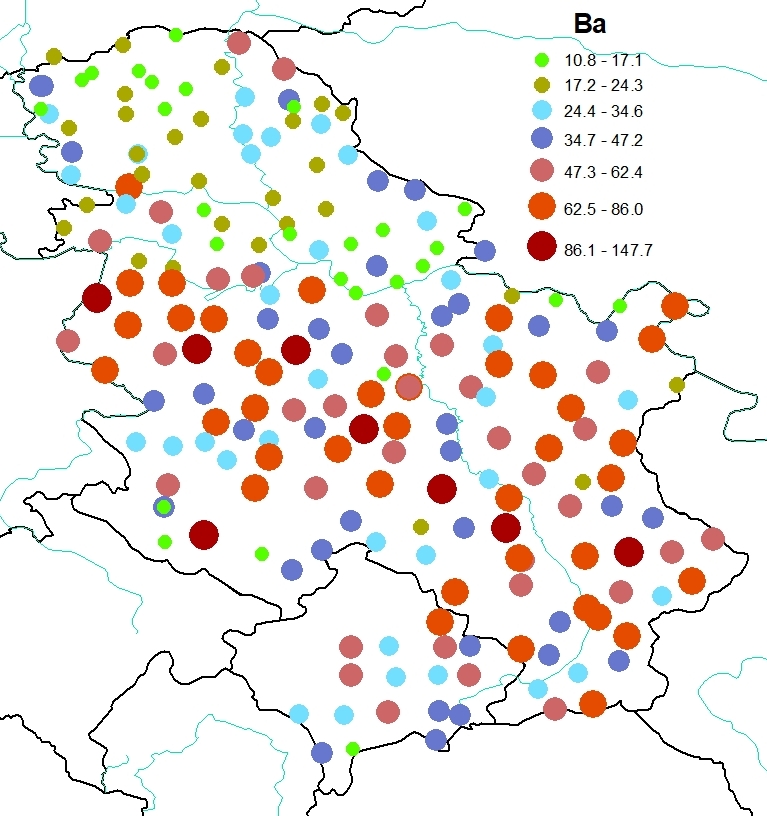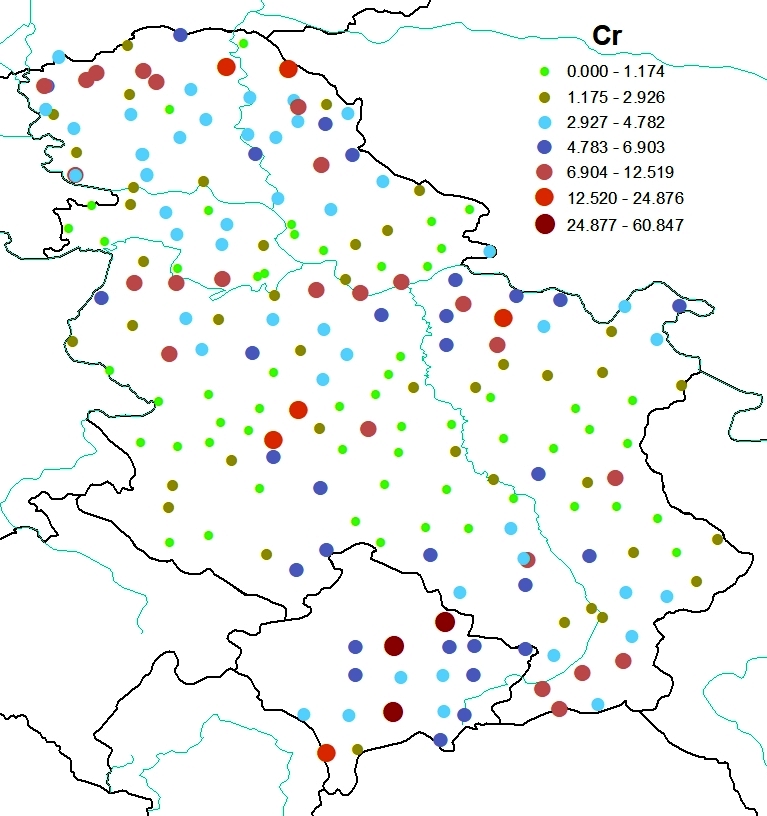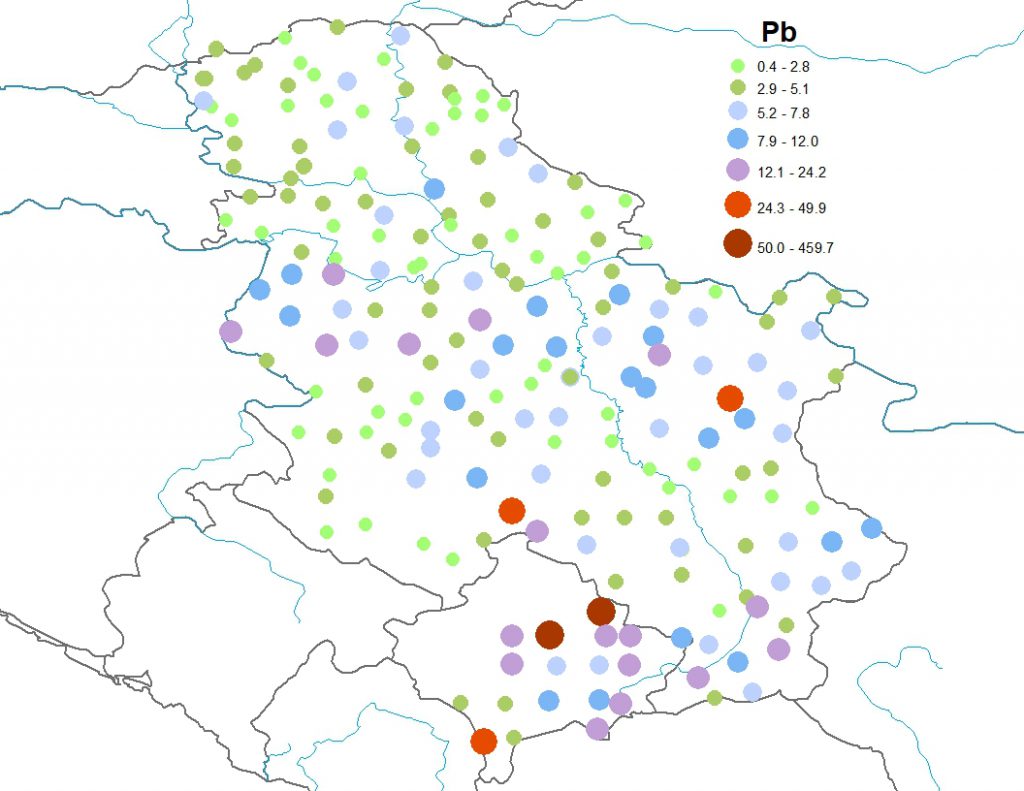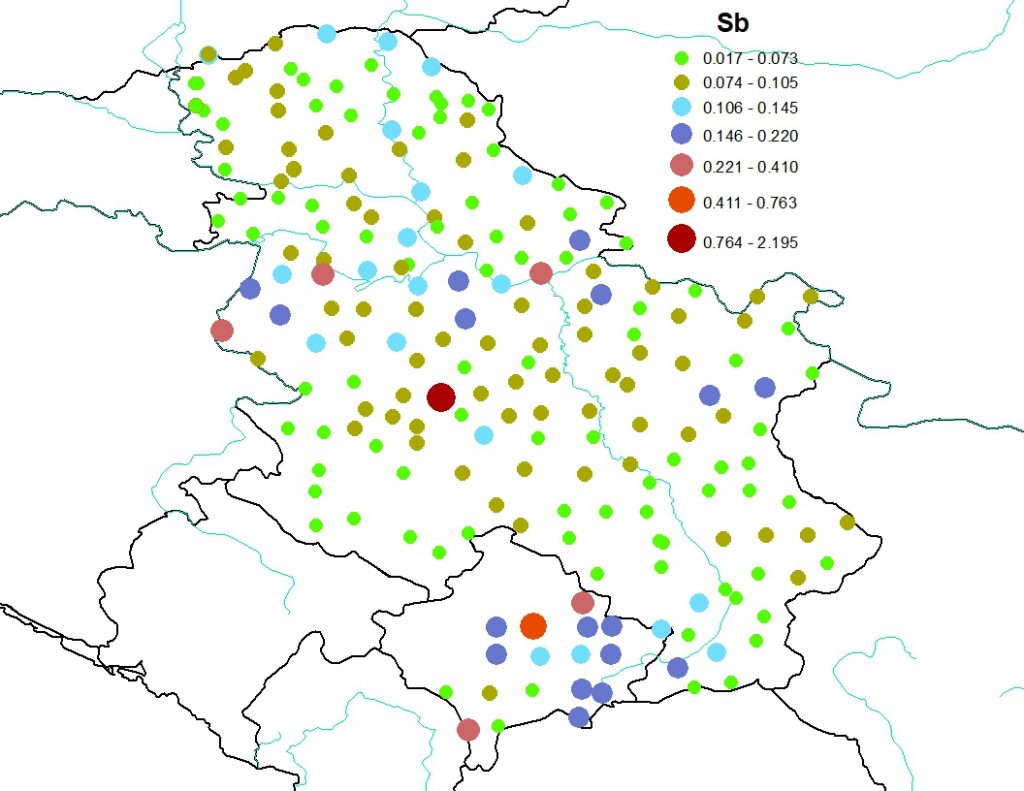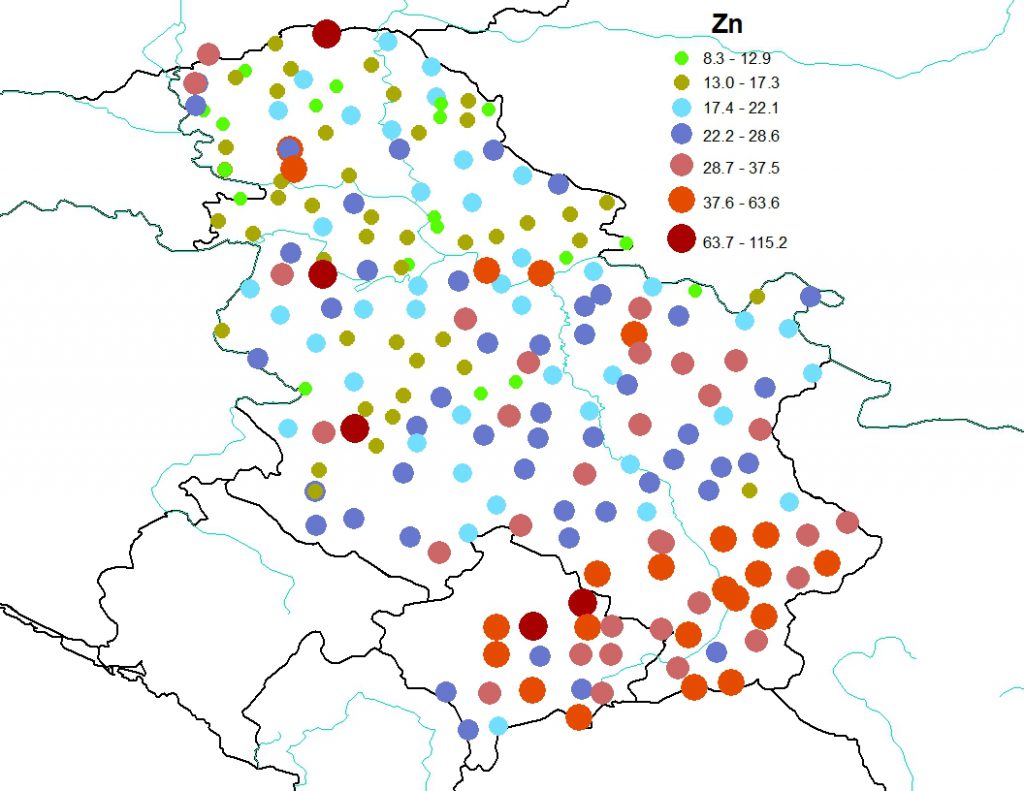Key message: In Serbia there is a declining trend of air pollution with potentially toxic elements
Assessment: The bio-indicator species of moss Hypnum cupressiforme is used in Serbia for the research of air quality in non-urban/rural areas (so-called passive bio-monitoring). In Serbia, there was a declining trend of air pollution with potentially toxic elements in the period from 2000 to 2015 (a potential cause: the cessation of the operation of numerous industrial plants).
Spatial distribution of element concentrations in the moss across Serbia in 2015 highlighted the southern part of the country (territory of Kosovo and Metohija) as the most loaded with the elements, especially As, Cd, Cr, Ni, Pb, Sb, V and Zn. This area is characterised by complex geological settings, followed by mining, and the other related activities. Besides, the highest concentrations of Cu found in the region of the copper-mining basin in the north-eastern part of Serbia.
Spatial distribution of natural radionuclides and 137Cs was assessed in the moss samples collected in 2015. Particular interest was on the spatial distribution of 7Be, cosmogenic radionuclide, produced by cosmic radiation in lower stratosphere and upper troposphere. This radionuclide can be used as natural radiotracer in estimation of atmospheric transport paths. Higher concentrations of 137Cs were found in the moss growing in forests of mountain regions than in agricultural areas. Spatial distribution of 7Be was non-uniform across Serbia, and varied even for the order of magnitude.
Figure 1: Concentration of heavy metals in mosses as indicators of air pollution per element

Figure 2: Concentration of heavy metals in mosses as indicators of air pollution per years

Figure 3: The content of radionuclides 7Be in moss H. cupressiforme across Serbia in 2015 – 2016.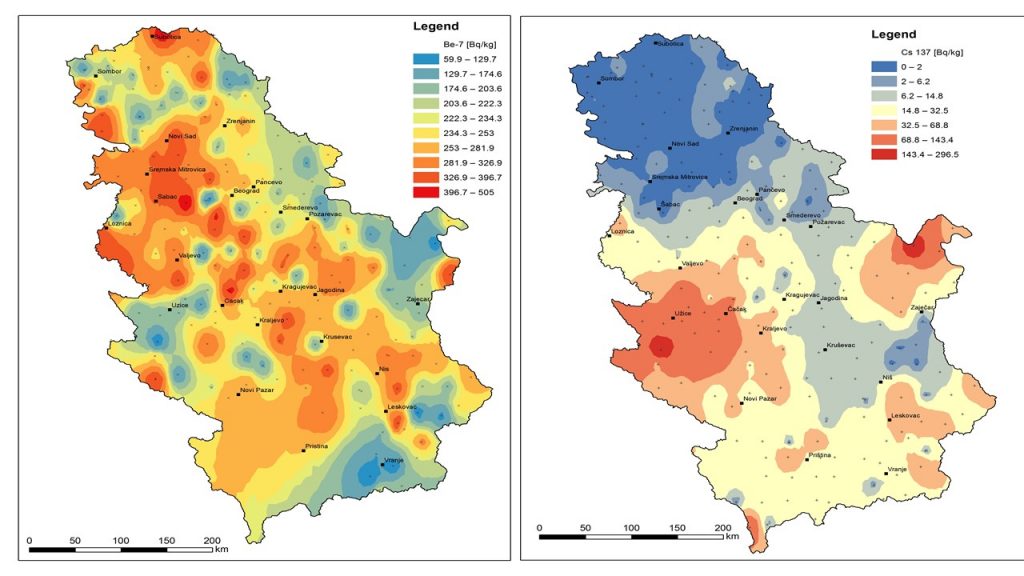
Indicator Name: Biomonitoring of air pollution
Institution/Author: Institute for Physics Belgrade, University of Belgrade /dr. Mira Aničić Urošević
Use and interpretation:
Key question(s) which indicator helps to answer: Level of air pollution in sub-urban and rural areas
Use of indicator: Passive biomonitoring of air pollution
Scale of appropriate use: Concentration of elements (mg kg-1) in mosses Hypnum cupressiforme at the territory of the Republic of Serbia, in the period 2000-2015
Potential for aggregation:
Meaning of upward or downward trends: declining trend of air pollution with potentially toxic elements
Possible reasons for upward or downward trends: closing or inactivation of mining and the other accompanied activities
Implications for biodiversity management of change in the indicator:
Units in which it is expressed: mg kg-1
Description of source data: Serbian Environmental Protection Agency; Institute for Physics Belgrade, University of Belgrade
Calculation procedure: Every five years, from the same sampling sites across the country, the samples of Hypnum cupressiforme are collected. The upper green part of the moss (related to the 2,5-3-year-old segment) was analyzed and provided information about the presence of potentially toxic elements and radionuclides. Since mosses naturally feeding on the air (via phylloid and cauloide), the element content measured in moss tissue reflects their ambient air concentrations. Passive moss biomonitoring implies repeating the moss sampling and element measurement according to the strict procedure provided by the Monitoring manual (https://icpvegetation.ceh.ac.uk/sites/default/files/ICP%20Vegetation%20moss%20monitoring%20manual%202020.pdf)
Most effective forms of presentation: Maps and graphs
Limits to usefulness and accuracy: Applicable in sub-urban and rural areas
Updating the indicator: Every five years
Closely related indicators: Indicators for air quality
Additional information and comments
Table: Heavy metal concentrations (µg g-1) in moss H. cupressiforme in Serbia in 2000, 2005 and 2015 campaigns
Source: ICP Vegetation Moss Survey Report 2015/2016 (https://icpvegetation.ceh.ac.uk/sites/default/files/REPORT-Frontasyeva.pdf)

Map: The mean element concentrations (mg/kg) in moss H. cupressiforme across Serbia in 2015-2016.

